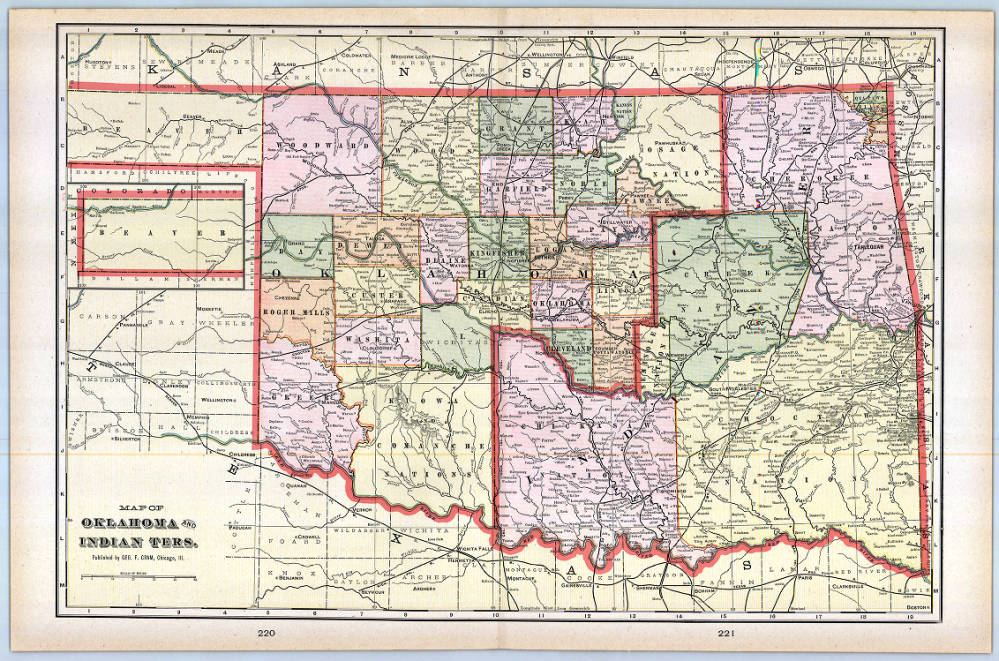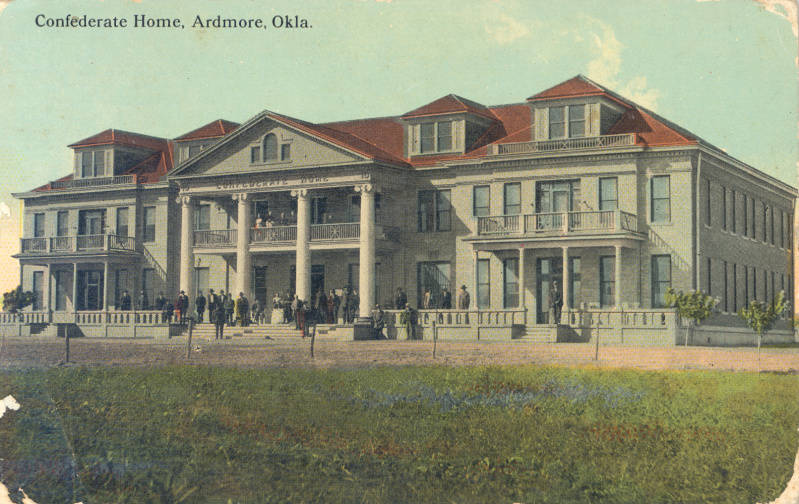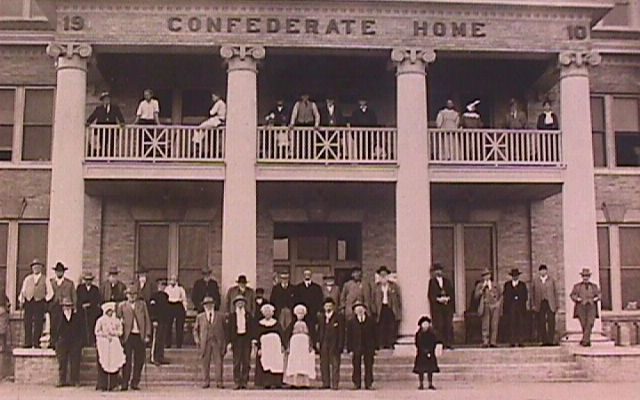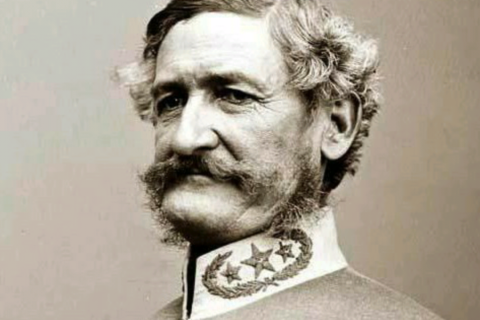I was born November 9, 1965, at Balboa Naval Hospital, San Diego, California, where my father was officially stationed as a young enlisted man beginning his service in the U.S. Navy. For most of our time in San Diego my father worked as a supply clerk based with his unit in the Philippine Islands in support of the Vietnam effort. Sometime shortly following my father’s return to the states, he was transferred to Pensacola Naval Station, where of course we went to live while my father served out the remainder of his time in the Navy.
While I retain precisely no memory of our time in San Diego, not even that a vacation there in 2003 with my mother directing me through our ‘old stomping grounds’ could conjure up, I do remember, surprisingly enough, quite a lot from our time spent in Pensacola. Of no particular relevance to the current essay, the true subject of our investigation, I must nevertheless beg your indulgence and a few more moments of your time while I share a humorous yet instructive anecdote about our time on the Gulf Coast in the Florida Panhandle.
We lived in a little trailer park near the Navy base. One of my playmates close to my age whose family lived near us in the park was a biter. He had bitten me on numerous occasions previous to the incident I’m about to relate, and my mother apparently had been taking note of every single occurrence. On the particular occasion in question the kid bit me so hard he broke the skin and brought blood. Unbeknownst to either of us, my mother happened to be watching the entire incident from the kitchen window inside our house. About the time I got to the steps of the trailer, whimpering over the pain of the bite so recently inflicted upon me, my mother came flying out the front door in a rage, grabbed me by the arm and dragged me in a beeline to where the kid was still sitting and playing, perfectly oblivious to the well-earned retribution that was about to befall him. To insure he wouldn’t make a break for it and escape the fate she had in store for him by way of my jaws and teeth, my mother grabbed the kid by the arm and held him in place as she ordered me to “Bite him back. Right now!”
Now, I had almost rather taken a beating for disobedience to my mom as to bite the poor kid in spite of his having bitten me on multiple unanswered occasions before. Almost. In an attempt to appease my vengeance-seeking momma, I leaned down and gave the kid what I would now describe as a ‘love bite,’ hoping this would satisfy the blood-lust of my enraged mom. My mother, however, was having none of that and, in a voice that almost sounds demonic as the recording indelibly etched upon my memory still plays it back to this very day, she exclaimed with an inexplicable clarity yet severity of tone through tightened lips and gritted teeth, “I said bite him harrrrddd, dammit!” That is a direct quote, as God is my witness.
It is impossible for me today to accurately describe in writing the way my mother’s voice sounded to my ‘virgin ears’ as she gave that order. And that is to say nothing of the appearance then so foreign to me her contorted facial features shown in that moment of youthful female fury. Mere words simply cannot do it justice; I can only describe it as “otherworldly.” Suffice to say the effect of the combination was blood-curdling to a 3 year-old, but nevertheless perfectly effective its intent; half-assing the task assigned me at this point would be completely out of the question, and I somehow knew it as well as I knew my own name. I understood instinctively what I hadn’t otherwise already learned through hard-won experience when my mother meant business, and this occasion was far and away the angriest and most determined I had ever seen her up to that date. So I reluctantly did the job I was ordered to do, and did it right this time. Maybe even a little too right.
An eye for an eye, a tooth for a tooth, a mark for a mark and, … blood for blood, brothers and sisters; but the kid never bit me again afterward, nor was I ever too timid or afraid, nor too “soft hearted” as it were, to defend myself or one of mine afterward either. Thanks, Mom!
My father moved us back to South-central Oklahoma when his time was fully served and he received his discharge from the Navy. We moved around quite a bit in those early years back in our home state, always remaining within a fairly tight radius of kith and kin with only two brief exceptions. We lived in Ringling, Oklahoma at first, where I went to pre-school amongst my own people whose family histories are very similar to my own; then my dad took a job doing A/C and appliance repair work for Sears in Ardmore. We lived on 12th Street in Ardmore during my kindergarten year in a house that no longer stands. Dad moved us to Springer, Oklahoma during my 1st and early 2nd grade years. I went to school there, strange as it seems these days, in the same room with about twenty other kids ranging in age/grade level from 1st to 6th grade. My dad was transferred to the Sears store in Ada, Oklahoma during the later part of my 2nd thru early 3rd grade years; then back to the Ardmore store.
My father bought a house on Bixby Street in Ardmore directly across the street north of Lincoln Elementary where I attended school the rest of the 3rd – early part of 4th grade. The house on Bixbie was also conveniently located within walking distance from Sears at the time, where my dad worked when he wasn’t on a service call. Across the street to the south of the school and in direct line of view through the windows of my 3rd grade classroom was a magnificent two-story Victorian looking house featuring beautiful Ionic Columns prominently standing erect supporting the upper porch at its front entrance. I thought it the most beautiful house I had ever seen with its perfectly manicured front lawn complimenting its beauty. On more occasions than I care to recount my 3rd grade teacher jarred me out of a deep day dream imagining what lie inside the house, or of its construction ‘back in the day’, with a severe rap on my desk inflicted with the yard stick she seemed to always keep near to hand for such daydreamers as I. To which my classmates would often get a good laugh at my expense afterward, but for which I was never much amused. In hindsight I think she might have done better by us all had she taken an interest in my interest in that old house and led me and perhaps a few others in a study of the details of its history and architecture. But that was not to be anymore than her raps on my desk with the fated yard stick were to permanently turn my undivided attention to her boring lectures in “Social Studies” and away from the enrapturing features of that house.
During those early formative years our little family would, from time to time, go on picnics or similar family excursions to Lake Murray State Park, among other interesting places in the vicinity. Although I cannot be sure, I should nevertheless imagine that it was on our way to or from one of these weekend outings that the existence of the subject before us first captured my notice. Upon which notice I probably asked my dad (who had a lot more patience for my inquisitions at the time than did my mom), “what is that building?” To which he likely replied something to the effect of, “it is the Veteran’s Home, where old men who were once in the Army are now taken care of.” My dad would not have been overly specific with me in answer to such a question at that early age; he would have just given me the bare information he thought I ought to know and left it at that until a later date should the question come up again.
As far back as I can remember personal awareness of the aforementioned Veteran’s Home’s existence, it has always been called by the locals simply by that name. No one I personally know nor anyone I ever knew who is long since deceased ever referred to the home by any other name than that I can recall. If someone mentions The Veteran’s Home around these parts, everyone knows (s)he’s talking about the Veteran’s Home on South Commerce Street in Ardmore. Anyone who doesn’t know it ain’t from around here.
Of late I have been doing a lot of genealogical research. Part and parcel of that research has involved reading a bunch of old newspaper items from pre-statehood days in the old Oklahoma and Indian Territories. Where I grew up was, pre-statehood, located in Indian Territory, not Oklahoma Territory. Specifically, Pickens County, I.T. (Indian Territory) – Chickasaw Country in other words.

There is a big difference between Indian and Oklahoma Territories we moderns tend to be generally and blissfully unaware of. Namely that, among other things, the early Pioneer Settlers of Indian Territory were, as with my own ancestors, mostly of Southern extraction; whereas, persons of mostly northern extraction made up the bulk of early pioneer settlers of the Territory known to an earlier period in history as Oklahoma. The settlers of Oklahoma Territory wanted essentially nothing to do with the settlers of Indian Territory, and I think it safe to say the feeling was mutual on this side the dividing line. And these differences of character, of opinion, and yes, of pure, hard-nosed grit, are still noticeably persistent in the posterity of the two peoples to this very day.
As much as the powers that be and certain “respectable” persons in what is now all Oklahoma would love to erase all memory of our Confederate roots down here in the former Indian Territories, a certain element among us will never allow that to happen so long as there is breath left in us to remind our brethren of where they came from and under what specific circumstances.
Part of my researches have also involved reading old interviews conducted with some of the early pioneer settlers of the old Indian and Oklahoma Territories. From whence interviews there is all sorts of good and useful historical information to be gleaned so long as there are two or more witnesses stating the same facts. While reading one such interview done with a man named Andrew Jackson “Andy” Addington in 1937, I quickly noted that the interview was conducted within the confines of “The Confederate Home, Ardmore, Oklahoma,” where Mr. Addington was an honored resident at the time. To which revelation my very first thought was, “I didn’t know there used to be a Confederate Veterans Home in Ardmore,” and to which I immediately resolved to dig into it and find out where in Ardmore the home had been located and what it might have looked like; my initial assumption wrongly being that the structure no longer existed.
When I later Googled it, photos of what I’d always known simply as The Veteran’s Home in Ardmore immediately popped up. And just as immediately as they came up on my screen, I likewise recognized the building as The Veteran’s Home I had known since the very early days of my youth in the early 1970s.
Whether my father was aware of the Home’s Confederate origins is doubtful. He never mentioned it to me if he was aware of it, and he probably would have. When he was only two years-old (1949) the Confederate roots of the Home were officially expunged from the record by way of changing its name to the broadly inclusive, Oklahoma Veterans Home; prior to which date its exclusive Confederate origins were boldly emblazoned above the main entrance upon the building’s face. Had one of your traveling ancestors passed through or visited Ardmore in the years between 1910 and 1949, (s)he might have taken time to send another of your ancestors back home a post card from the town like one of the following:


In 2011, the City of Ardmore formed a commission whose task it was/is to plan and see to the preservation of a number of iconic structures standing within the city limits. Two of which structures found in the commission’s report are (1) the subject of this essay, and (2) none other than the Victorian house aforementioned that I used to day dream about from my 3rd grade classroom at Lincoln Elementary. I wonder if part of the plan of the commission with regard to the former is to restore to its rightful place the home’s original name flanked by its date of construction as seen on those old post cards? Somehow I have my doubts.
Mr. Andy Addington died in 1938, less than a year after his interview was conducted from the home. He was buried in Fairview Cemetery at Gainesville, TX near his oldest brother who was an early casualty at Fort Gibson, Oklahoma in the WBTS. Mr. Addington would probably have been mortified to learn that barely a decade following his death the Confederate Home of his residency for the same period preceding would have its Confederate origins expunged from its face; that merely thirty-five years forward from that date an inquisitive little boy noticing the structure for the very first time on his way to a family picnic could not be told of its true history for lack of knowledge thereof in his parents.
When I was fresh out of high school my best friend and I would occasionally pay a visit to the home as both his parents were new residents there. His father was suffering from cancer and his mother was allowed to live at the facility with and help take care of her dying husband. Since that time I have had rare occasion to even drive past the old Home, much less pay its premises a visit. There are other ways of getting to Lake Murray that are more convenient when the notion strikes me to go there. I have reason now, however, to take that route, minor inconveniences notwithstanding. Whereupon should one of my younger grandchildren who happens to be along for the ride ask, “Grandpa, what is that building?,” I will answer, “That is the old Confederate Veteran’s Home, where sickly or otherwise indigent old Confederate Veterans were once well taken care of by a proud and grateful staff.” As for my twelve year-old grandson should he ask the question of me, well, my answer will be, “have you not read The Confederate Veteran’s Home I Never Knew Was In My Own Back Yard?”
-By Terry Morris

O I’m a good old rebel, now that’s just what I am. For this “fair land of freedom” I do not care at all. I’m glad I fit against it, I only wish we’d won, And I don’t want no pardon for anything I done.






Enjoyable read. Well done sir.
Thanks. Glad you liked it.